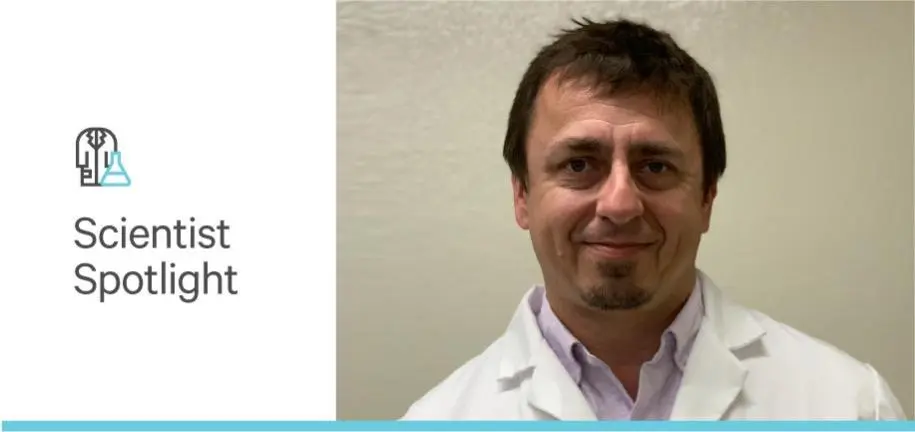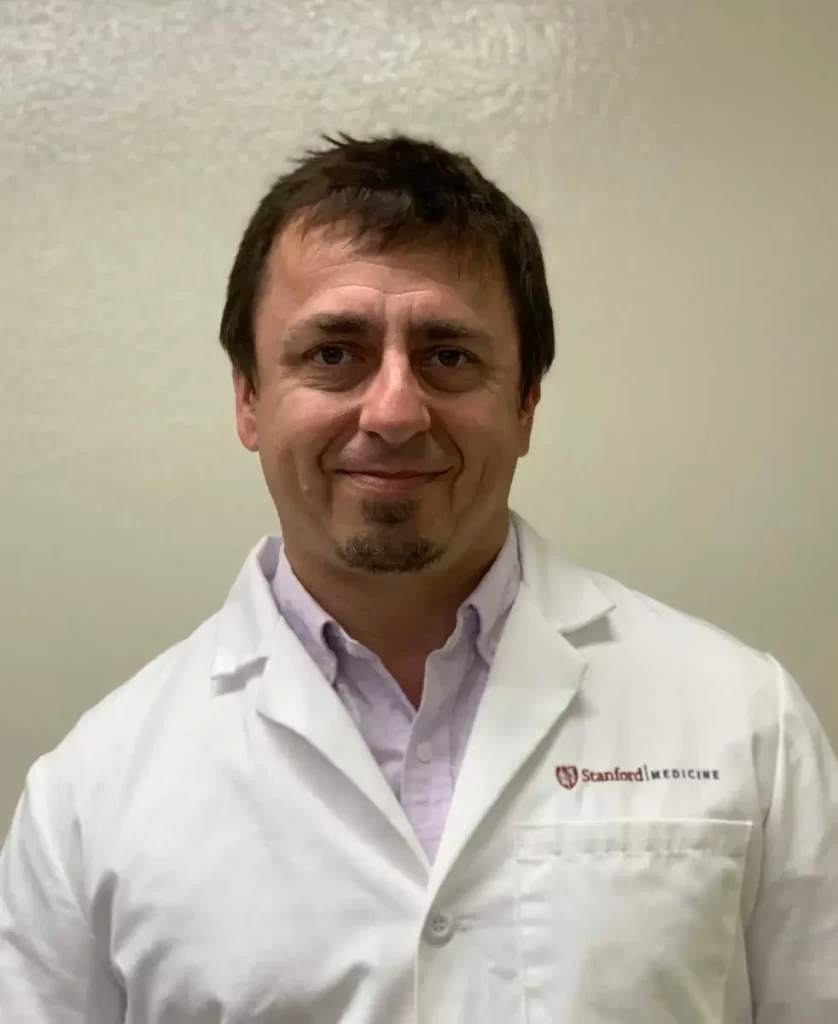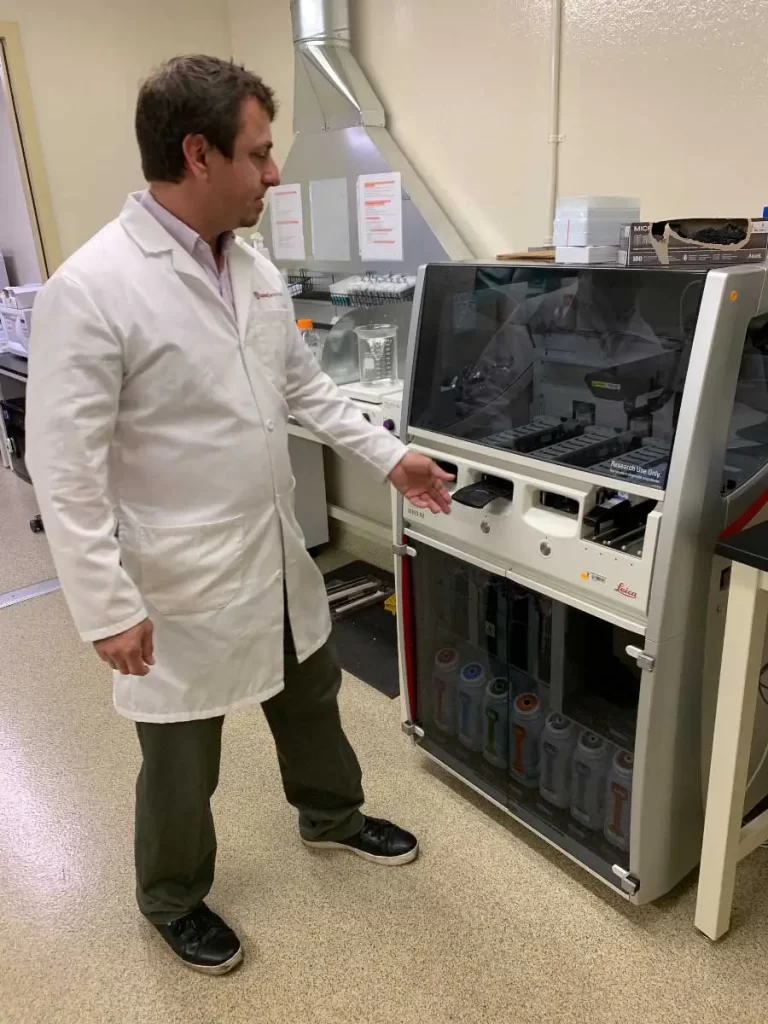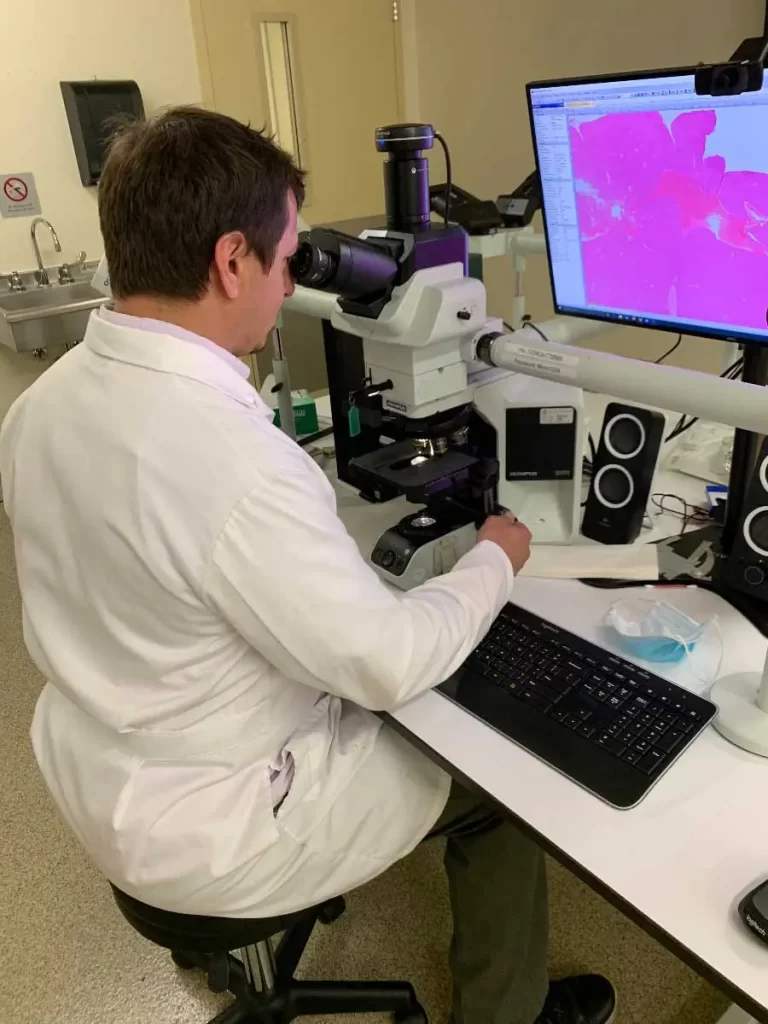
Vector Laboratories is closed for the President’s Day on Monday, February 19th. We will be back in the office on Tuesday, February 20th.
We will respond to emails upon our return. Have a wonderful day.
Menu
Vector Laboratories is closed for the President’s Day on Monday, February 19th. We will be back in the office on Tuesday, February 20th.
We will respond to emails upon our return. Have a wonderful day.


Eric Peterson has long held an interest in the underpinnings of life, found enjoyment in science fiction, and taken a practical approach to career choices rooted in economics. He is not the guy who plotted his career path from start-to-finish; instead, he chose a career in the growing field of technology and was confident that there was a stable market for scientific professionals. Today, Eric feels fortunate in his position as Animal Histology Services Manager, not only because he works with a wonderful team and has a supportive boss, but also because he perceives Stanford as a long-term professional home.
“… growing up in the 80s, I saw who got laid off during the economic recession. It looked like manufacturing was dying, but it seemed like there was always a market for scientific professionals. Since a lot of people are afraid of math and science, I saw an opportunity and the potential for growth.”
Eric earned a BS in Biochemistry in 1997 from the University of California, Davis, along with a minor focused on the history and philosophy of science. That same year, he was a contestant on Jeopardy! He appeared in two episodes, won a Daily Double betting everything on a physics topic, and ultimately won $11,001 and a trip to Vermont. Since then, he has learned histology with 15 years of hands-on experience in a variety of laboratories and earned his professional credentials: a histotechnologist certificate (HTL) and a qualification in immunohistochemistry (QIHC), both issued from the American Society of Clinical Pathology. In 2017, he began his stint as the Animal Histology Services Manager at Stanford School of Medicine (Stanford, CA). This year, he added an MBT (Master of Biotechnology) from San Jose State University (San Jose, CA) to his resume.
“There was a path through the ASCP (certifying agency) where you could sit for their exam if you had worked full-time in histology for at least one year. So, when the lab where I was working ended up losing a prominent customer, and having previously lost a job to reorganization, I could see what was coming. I chose to get my certification before that happened, and that credential was instrumental in getting my next job offer, even before that lab closed.”
You will likely find Eric in and out of the veterinary services core facilities, using the microtome to cut 20–150 blocks from client samples throughout a given day, embedding samples, working on antibody staining for fluorescent or brightfield imaging (often with a VECTASTAIN® ABC kit), and managing laboratory personnel along with purchasing, budgeting, and reporting tasks. His supervisor, a veterinary pathologist, meets twice a week with the core team (Eric, his technologist, and the lab’s grad student) to review the sample slides produced between meetings. Eric appreciates these meetings as intensive learning opportunities rather than merely business recaps.
The core facility offers a broad selection of staining protocols and validated kits with custom staining services upon request. Although Eric appreciates the aesthetics of histochemical staining, he generally looks at it more from the technical perspective. He knows that single-color antibody staining is effective, but multiple-color staining and filters can unveil a phenomenal amount of information that cannot otherwise be seen. Since the lab serves a broad range of veterinarians on staff along with first-year graduate students and long-term MD and PhD researchers, Eric strives to understand client needs and caters his consultations to provide them the best possible service and advice. He knows from experience that a 15-minute consultation often saves the researchers a lot of time.

“What I like about working at a university is that billing the costs is not a be-all or end-all. In a commercial lab, the goal is to make money. But in the lab at Stanford, the goal is research and education. And so, it’s more important that the researchers are choosing the right resources and getting the best results possible.”

Eric believes it is critical to view science within a historical, big picture context. He recognizes that this type of approach yields better insights into societal obligations. At UC Davis, one of his philosophy professors was Paul Teller, the son of the ‘Father of the Hydrogen Bomb’ Edward Teller, which brought not only a real-life connection to a seminal scientific discovery, but also a unique ethical perspective. This experience taught Eric to question the role of science in dealing with large-scale crises. In the context of today’s coronavirus pandemic, Eric sees the “astonishing” benefits that science can bring to humanity—citing the successful worldwide development and delivery campaign of multiple vaccines in record time using new and old technology. Given the hypothetical opportunity to sit down with any expert, Eric would jump well outside the sciences and choose Robert A. Caro, a Pulitzer prize-winning biographer, to discuss political power in the US, broaching the good, the bad, and everything in between. For Eric, tying the present to the past and turning it into a learning opportunity is important not only in working within the controlled context of the laboratory but also in navigating the unpredictable realities of life.





Stay in the Loop. Join Our Online Community
Together we breakthroughTM

©Vector Laboratories, Inc. 2024 All Rights Reserved.